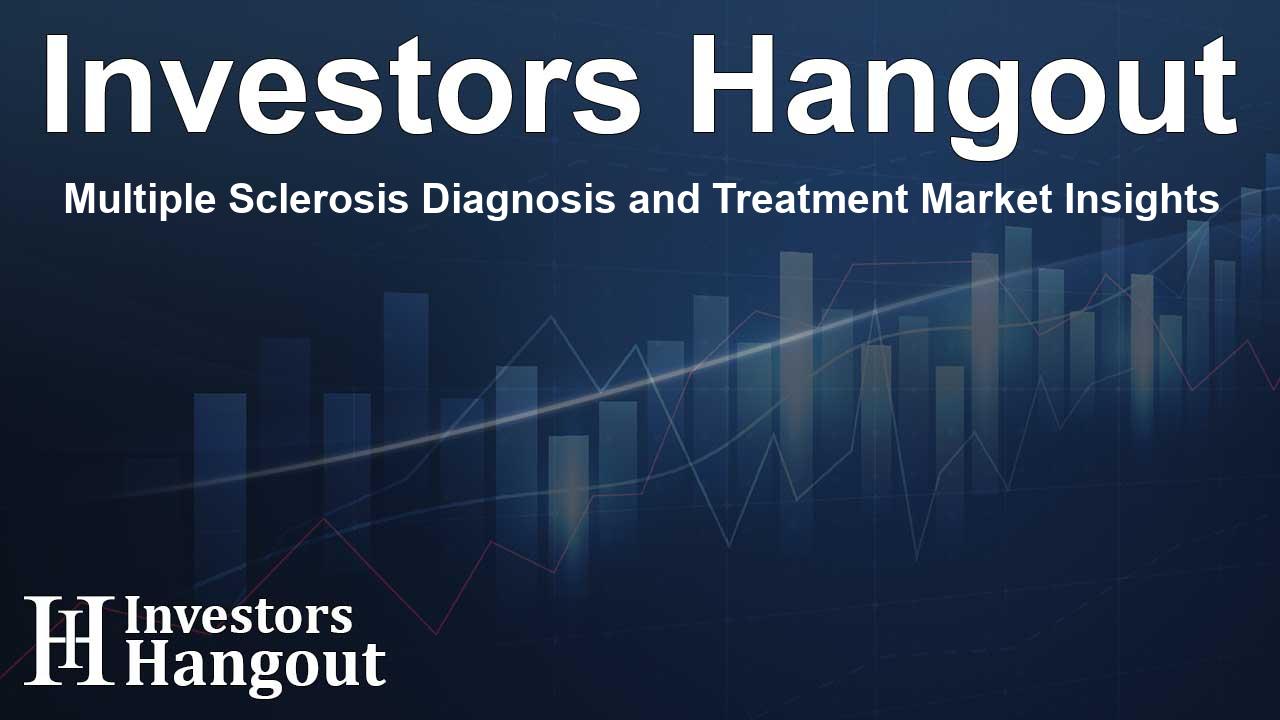Multiple Sclerosis Diagnosis and Treatment Market Insights

Multiple Sclerosis Diagnosis and Treatment Market Overview
The global multiple sclerosis (MS) diagnosis and treatment market is on a steady growth trajectory, currently valued at approximately USD 22.14 billion in recent assessments. Projections indicate that this market size could soar to USD 30.28 billion by 2032. Driving factors include the increasing prevalence of multiple sclerosis coupled with advancements in treatment protocols and diagnostic technologies.
Key Insights into the Market
The MS diagnosis and treatment market presents several critical data points worth noting:
- North America currently holds the largest market share with a commanding 38.3% as of the latest figures.
- The Asia Pacific region is poised for rapid growth, with an estimated compound annual growth rate (CAGR) of 7% in the upcoming years.
- Relapse-Remitting MS (RRMS) continues to dominate, comprising over 70% of the diagnosed cases in 2023.
- Medication remains the primary treatment modality, accounting for an impressive 81% share of the overall market.
Understanding the Market Dynamics
Path to Recovery in Multiple Sclerosis
The therapeutic landscape for multiple sclerosis encompasses a diverse array of diagnostic and treatment solutions, integrating innovative tools such as MRI technologies and advanced biomarker testing. Moreover, the evolving treatment avenues include disease-modifying therapies (DMTs), symptomatic treatment strategies, and rehabilitation services.
Advancements in MS Treatment
The MS market is witnessing significant momentum thanks to rapid advancements in diagnostic and therapeutic methodologies. Pharmaceutical companies are heavily investing in research and development endeavors to generate new and effective therapies aimed at better management and halting progression of the disease. Personalized medicine and telemedicine technologies are also emerging, enhancing the delivery of tailored healthcare services to patients.
North America’s Stronghold in MS Management
North America has consistently led the MS diagnosis and treatment market, especially the United States, which boasts a robust healthcare infrastructure and an unparalleled focus on research and development. In the last few years, the region has seen remarkable advancements in both therapeutic options and diagnostic tools, including magnetic resonance imaging (MRI) technologies. These innovations are crucial for effective disease management.
Emerging Opportunities in Asia Pacific
The Asia Pacific region is rapidly evolving in the MS diagnosis and treatment market, driven by rising healthcare investments and improved awareness. Key players from countries such as Japan, China, and Australia are leading the charge with enhanced diagnostic and treatment capacities. For instance, Australia has recently allocated substantial funds towards MS research to foster innovation in the sector.
Recent Developments in the Market
Introduction of Innovative Therapies
Several companies have made notable strides in the development of new MS therapies. Notable among them is Novartis, which introduced Kesimpta, the first self-administered targeted B-cell therapy for relapsing MS. Such innovations underscore the commitment of the pharmaceutical industry to meet the challenges of MS treatment.
Global Collaborations in Research
Organizations like the National Multiple Sclerosis Society have been pivotal in allocating resources, such as USD 4 million in research initiatives aimed at enhancing MS care. This illustrates a broader commitment to improving outcomes for MS patients worldwide.
Challenges Faced by the Market
Despite the advancements, challenges remain. High drug costs associated with DMTs create substantial barriers to access for many patients. Reports have indicated that the average annual cost for these therapies can reach approximately USD 94,000, which poses a significant financial burden and can lead to non-adherence to treatment protocols.
Market Segmentation Insights
By Type
- Relapse-Remitting MS (RRMS)
- Primary Progressive MS (PPMS)
- Secondary Progressive MS (SPMS)
- Clinically Isolated Syndrome (CIS)
By Diagnosis
- Imaging Tests
- Spinal Fluid Analysis
- Other Diagnostic Tests
By Treatment
- Medications
- Physical Therapy
- Mental Health Counseling
Frequently Asked Questions
What is the current market size of the MS diagnosis and treatment market?
The current market is valued at approximately USD 22.14 billion and is projected to reach USD 30.28 billion by 2032.
What drives the growth of this market?
Key growth drivers include rising MS prevalence, advancements in treatment options, and increased investments in healthcare research.
Which region dominates the MS market?
North America dominates the MS diagnosis and treatment market, accounting for a substantial share due to advanced healthcare infrastructure.
What role do DMTs play in this market?
DMTs have a critical role, holding a dominant share in treatment options and significantly aiding in managing MS symptoms.
What are the projected trends for the Asia Pacific market?
The Asia Pacific region is expected to experience rapid growth owing to increased healthcare investments and advances in diagnostic and therapeutic technologies.
About Investors Hangout
Investors Hangout is a leading online stock forum for financial discussion and learning, offering a wide range of free tools and resources. It draws in traders of all levels, who exchange market knowledge, investigate trading tactics, and keep an eye on industry developments in real time. Featuring financial articles, stock message boards, quotes, charts, company profiles, and live news updates. Through cooperative learning and a wealth of informational resources, it helps users from novices creating their first portfolios to experts honing their techniques. Join Investors Hangout today: https://investorshangout.com/
Disclaimer: The content of this article is solely for general informational purposes only; it does not represent legal, financial, or investment advice. Investors Hangout does not offer financial advice; the author is not a licensed financial advisor. Consult a qualified advisor before making any financial or investment decisions based on this article. The author's interpretation of publicly available data shapes the opinions presented here; as a result, they should not be taken as advice to purchase, sell, or hold any securities mentioned or any other investments. The author does not guarantee the accuracy, completeness, or timeliness of any material, providing it "as is." Information and market conditions may change; past performance is not indicative of future outcomes. If any of the material offered here is inaccurate, please contact us for corrections.